Nature's wrath hits hard
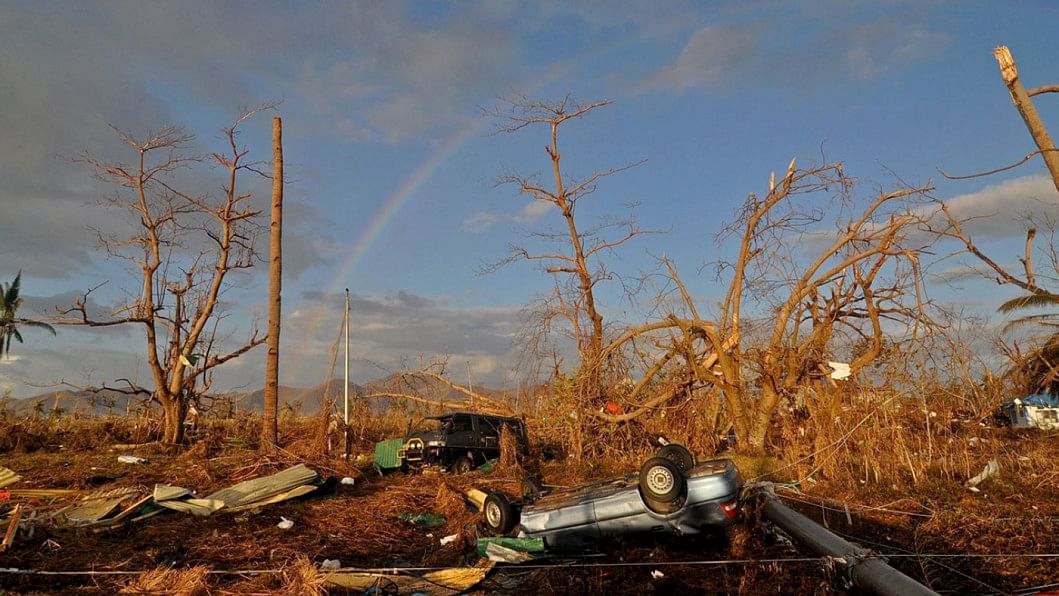
Manila - The warnings could not have been more severe: a monster named Haiyan was coming, a storm carrying rains at wind speeds no one on Earth had ever seen or felt before, so strong it could sweep the sea inland.
That Thursday evening of November 2013, as Central Philippines girded for the supertyphoon that was expected to hit the next morning, radio anchor Alfredo Padernos remained in his booth in Tacloban City until late. His wife and five children were waiting at home, but the news anchor was on a mission to speak to his villagers in a language that left no doubt: This big one could kill you.
"They [warning agencies] were talking about a storm surge, but even to my ear, that's new. I felt, like in math, you reduce it to the lowest term, and use the simplest language," Padernos said in an interview.
"When I was broadcasting that night before Yolanda (Haiyan's local name), I felt we had no more time left to find out what really is coming. Whether it was a storm surge, a tsunami or tidal wave, it all means water coming from the sea will hit the shore, and we could die if we didn't leave the low-lying areas."
For Padernos, the message was as straight and blunt: "That water could kill you. Leave your house."
On November 8, when the typhoon hit land at a murderous 315 kilometres per hour, more than 6,000 lost their lives, some four million lost their homes and, in all, some 14 million were affected in 44 of the country's 81 provinces.
Nothing could have prepared Melvin Castro and his family for the destruction that could only be described as apocalyptic. They were warned, he said, but he and the 23 other members of his family could do no more than lock themselves at home and pray. They felt safe in their concrete, four-bedroom , two-storey house. Right after the first roaring surge of the angry sea, the water started rising and it rose faster when he opened his house's door to let in neighbours who were seeking help.
"In 15 minutes, the water was up to 20 feet, up to our waist when we were already on the second floor. Then came another surge, then another," said Castro in an interview back in March.
"There was no place to hold on to. You really can't fight it because even cars, ferry boats, were flying. And when the third surge hit, I thought to myself, nobody would survive this," said Castro in Filipino.
The entire family and the neighbours he let into the house soon got separated, forced apart by the raging waters. Castro survived but 18 of his relatives perished: his mother, grandmother and five of his siblings, included.
Economic setback
Estimates of the Philippines' National Economic and Development Authority placed total losses due to Haiyan at US$12.9 billion, including the cost of infrastructure and property destroyed, decline in agricultural and industrial production, sales and income, and increased operating costs of industries.
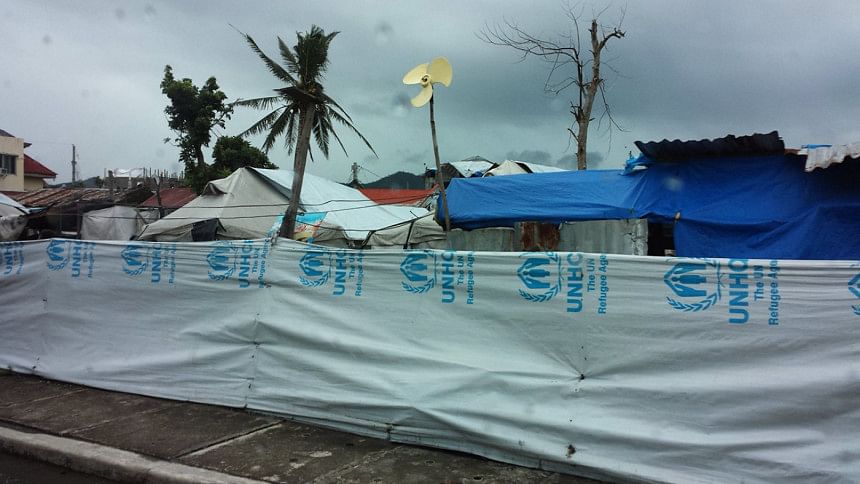
The Philippine Statistics Authority, meanwhile, reported on May 29 that the Philippine economy grew in the first quarter but at a slower pace of 5.7 per cent, falling short of the 6.3-per cent rate posted in the fourth quarter of 2013 due to the disasters that hit the country in 2013.
"All of these happened despite thorough preparations made by the government. Typhoon Yolanda, after all, was unprecedented in scale," Philippine President Benigno Aquino III said in a May 19 speech at the UN World Tourism Organisation's International Conference on Tourism and Climate Change.
The Philippine government holds an unequivocal stand that Yolanda is a direct effect of climate change, a phenomenon where warmer oceans spur fiercer typhoons. And it struck just as resource-strapped Philippines still reeled from the impact of humanitarian emergencies that started just weeks before: the 7.2-magnitude Central Visayas quake on October 15 and the conflict in Zamboanga City in southern Philippines in September.
"The storm swept away some of the first responders , along with many of the relief goods we had pre-positioned, not to mention some of the equipment needed to conduct rescue and relief operations. It laid waste to our airports, ports, and roads, complicating our relief efforts further," said Aquino during the conference held in Bicol, a region in the Philippines' eastern coast often hit by typhoons among other natural calamities. In the words of international experts and aid workers who saw the destruction themselves, it was a disaster no government in the world could have sufficiently prepared for.
Not if but when
In this age of a changing climate, of thawing ice sheets and warming oceans, of harsher winters and worsening droughts, science points to a future where events like Haiyan will no longer be an exception.
Whether the next big one will hit is not a matter of if, but when. And for one of the world's most disaster-prone nations, the urgency could not be more pronounced. "How many times do we have to be awakened?" asked Senator Loren Legarda, a staunch advocate of climate change, in an interview.
"Ondoy (Ketsana, 2009) was an awakening, Pepeng (Parma, 2009) and Sendong (Washi, 2011) and Pablo (Bopha, 2012) were events that awakened us as well. And Yolanda is, I hope, the final awakening," said Legarda, the Asia-Pacific Regional Champion for Disaster Risk Reduction of the United Nations Office for Disaster Risk Reduction.
She was referring to the strong storms that hit the Philippines over the last six years, disasters that altogether killed 3,000 people and cost the country some $5.7 billion in losses, according to the World Bank.
For Aquino, neglecting the warning signs would even be more dangerous. "[W]e cannot ignore the resounding message that Typhoon Yolanda sent to the world: if we do not tackle it head on, this "new normal" brought about by climate change will be here to stay, and we will be forced to continue to make unfair choices between disaster risk management and development."
"Make no mistake: All of us are stakeholders in this regard. Ignoring this problem means that the increasingly frequent and intense storms will continue to make landfall in our countries; changes in temperatures will continue to decrease our water supply and threaten our food security; and island countries, such as those in the South Pacific, will continue to worry that, within the span of a few decades, their countries may be consumed by the rising water levels and, eventually, cease to exist," he said.
Skepticism always present
The signs are all around, and it could be traced to decades of pursuing development while disregarding consequences to natural resources, said Nadarev Sano, Commissioner at the Philippines' Climate Change Commission.
"Climate skepticism will always be in the picture, but it should be stressed that an overwhelming majority of scientists support the evidence on human-induced climate change and its accompanying adverse impacts on the planet," Sano said in an interview via e-mail.
The official, a native of Leyte province, which was among areas hardest hit by Yolanda, made a tearful plea to the international community during climate talks in Warsaw in November, just as his province struggled to make sense of the devastation, find and collect their dead, and try to start again. At the time, his own brother was "gathering bodies of the dead with his own two hands".
During the conference, Sano, the country's lead negotiator at the UN Climate Change Conference, asked the world to "stop this madness" and commit to immediate climate action, particularly raising targets for
CO2 emission reduction among developed nations to at least slow down the impact of global warming.
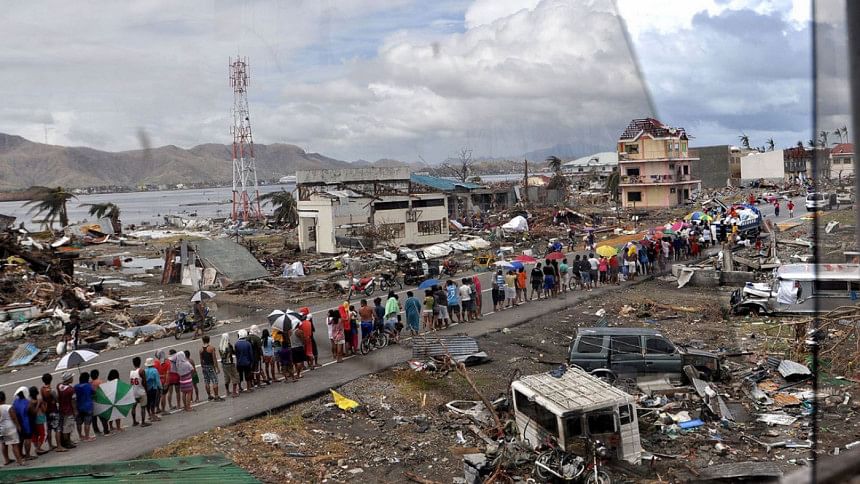
According to Sano, some 97.1 per cent of global scientists share the view that global warming is a result of indiscriminate human activity.
"[Scientists believe that] the Earth is warming because of increased concentrations of greenhouse gas emissions from human activities, the impacts are clear, and that solutions are available to address the crisis. The certainty of climate change being caused by human activities is the same as the certainty of tobacco causing lung cancer," he said separately in remarks at the World Economic Forum's Open Collaboration with East Asia New Champions, a community-led event held in Cebu after the close of the recent WEF on East Asia event in Manila.
Home to a rich biodiversity, the Philippines has seen severe depletion of natural resources over the last century, said Sano.
Less than one million of primary forests remain in the Philippines, barely a third of the 30 million hectares of virgin forests the country had some 100 years ago. While the country is recognised as the world's centre for marine biodiversity, some 90 per cent of its fish stocks have also been depleted, with less than 1 per cent of coral reefs deemed in good condition.
"The Philippines has also exceeded the country's resource capacity in 2008, with the population "using more than twice the biological capacity of the country."
"Apparently, we need two Philippines to provide for our consumption and to absorb the waste that we generate. This is the reason why many Filipinos remain poor, cannot live full decent human lives as many struggle to find access to food, shelter, health services and education," Sano said.
Legarda, meanwhile, cited estimates by the Asian Development Bank that the Philippines could lose up to 6 per cent of its gross domestic product annually by 2100 if climate change risks were not averted.
Problems identified
The Philippines knows the problem, and has taken steps toward a solution. The country's climate action programme is encompassed in two main laws: the Climate Change Act of 2009, which created the Climate Change Commission, and the Philippine Disaster Risk Reduction Management Act of 2010.
In 2012, UN special envoy for disaster risk reduction Margareta Wahlstrom hailed Philippine laws as "the best in the world", citing them as "an excellent legal framework for disaster risk reduction and an excellent legal framework for climate adaptation".
A key aspect of the climate change act, of which Legarda is lead author, is bringing mitigation and adaptation principles to the grassroots, mandating local government units (LGUs or cities and municipalities) to draw up and implement local action plans.
As a complement, the DRR law seeks to upgrade state and local government capacities "to build the disaster resilience of communities, and to institutionalise arrangements and measures for reducing disaster risks, including projected climate risks, and enhancing disaster preparedness and response capabilities at all levels." Legarda also authored several other laws that support national resiliency efforts, including the Renewable Energy Act, Solid Waste Management Act and the Environmental Awareness Education Act.
Still, like many laws in the Philippines - jokingly referred to at times as "mere suggestions" - enforcement of these climate and disaster-related laws is wanting, according to the senator.
"We have the so-called best laws in the world... but our operationalisation and effective implementation of these two laws are a work in progress, and there's no one to blame, because it's evolving. We've increased awareness [about climate change] but implementing these laws remains a big challenge," said Legarda.
"Does every municipality/city and province have a local action plan? What percentage of the 1,600 cities and municipalities have a local climate change action plan as instituted in the law?" she asked.
The country has already prepared and made widely available geohazard maps that chart vulnerable areas to guide land use planning and settlement. But, as previous disasters had shown, many homes and structures across the country still stand on typhoon paths and landslide-prone zones, among others.
"How many actually follow the geohazard maps? What should be considered a no-build zone because of its vulnerability to landslides or storm surges or tsunamis? Where should we reforest mountains or mangroves? All of these should be taken into consideration by the local government unit," she said.
Sano, meanwhile, noted the need to intensify efforts to protect the country's food security, particularly developing climate resilience of agricultural areas and irrigation resources. He called for the establishment of a national land use policy that "can foster coherence in long-term climate planning, zoning, and disaster risk reduction."
Paradigm shift
"The single biggest challenge of climate change is the impact on food security. As such, we must build systems that protect our food baskets, our prime agricultural lands, our water resources," said Sano.
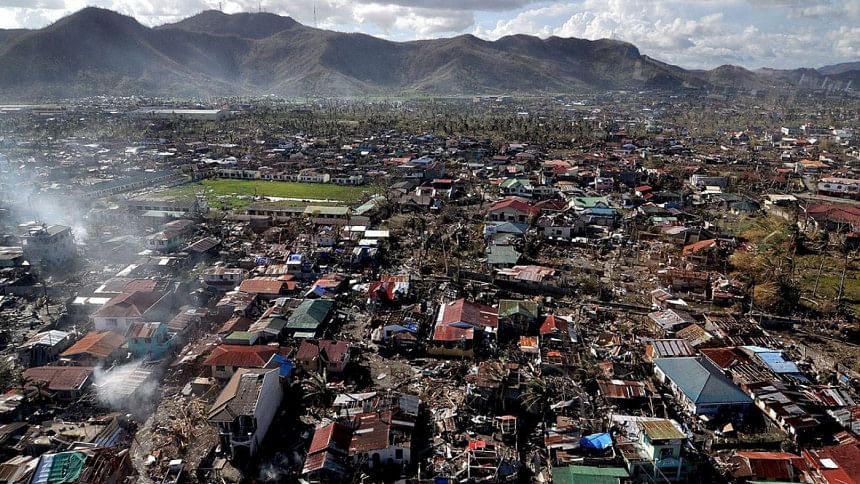
"In addition to the already many policies and programmes that aim to conserve natural resources and enhance agricultural productivity in the face of climate change and other shocks, what we truly need to focus on is the establishment of a national land use policy that determines the way we are suppose to use our land," he said.
Facing the long road ahead, Legarda sees a silver lining with the advocacy gaining in ranks - a "paradigm shift" for a society that had been used to merely reacting to disasters.
"There's a paradigm shift, and this has only come about recently, of late, in the past few years. Before, we were always response-oriented. Always a bigas-and-sardinas (rice and sardines), relief goods mentality," said the senator.
"But clearly, response is just one of the pillars of DRR , when we should actually prepare. By preparing, we actually limit or reduce the risk. And when you reduce the risk, there is less to respond to. That is very clear," said Legarda, whose advocacy for disaster risk reduction began while growing up in the city of Malabon in northern Metro Manila, a flood-prone area.
She cited estimates proving disaster risk reduction measures as "an investment rather than a cost: "For every $1 invested in preparedness, it is $4 to $7 you save from response."
"In the national consciousness, it has greatly improved. In local governance, there is also improvement, there's much to be done however. Because it takes a while for you to mainstream, to change a culture, to change an attitude, and a work ethic, but it's getting there," Legarda said.
Over recent years, such shift could be seen in pockets across the country, with a growing number of towns and cities taking the climate change and DRR advocacy to heart.
For one, the province of Albay in disaster-prone Bicol region is regarded globally as a model for its resiliency efforts, including recognition by the UNISDR. The province of multi-hazards- typhoons, landslides, volcanic eruption and earthquakes among others - is admired for putting in place early warning systems, regular training of local officials, emergency and health workers and NGOs, and the integration of DRR principles in education and business.
The town of San Francisco in Camotes Island, Cebu in central Philippines, is a 2011 UN Sasakawa Awardee for Disaster Reduction for a Purok (village) System, where the town invests in developing resilience measures custom-fit for its every village.
In 2013, San Juan town in Hinatuan, Surigao del Sur in southern Philippines, was awarded the government's Gawad Kalasag for Excellence on Disaster Risk Reduction and Management and Humanitarian Assistance in the barangay (village) category.
The locality gained such recognition for the close involvement of townsfolk in building community resilience, drawing from lessons they painfully learned in the devastation of Tropical Storm Washi in 2011, the deadliest storm that year with some 1,000 dead.
Among the town's DRR efforts include awareness campaigns, regular evacuation drills, mangrove forest conservation and the installation of water gauges in coastal areas to guide fishermen.
Foreign governments have also been supporting climate change and disaster risk reduction initiatives across the country as part of their development aid programme.
Mitigation, adaptation
At the national level, the Climate Change Commission remains at the forefront of state action, combining adaptation and mitigation measures "as a policy imperative", said Sano.
"The Philippines pursues mitigation as a function of adaptation. This means that we pursue renewable energy solutions, sustainable transport, energy efficiency, waste management, as a function of building the resilience of natural and human systems. Mitigation and adaptation are essential pillars of sustainable development and as such we must pursue both vigorously," said the Commissioner.
The Philippines' National Renewable Energy Programme is also looking to increase the supply capacity of the country's clean energy sources three times - from 5,369 megawatts to 15,304 megawatts - by the year 2030, said Legarda.
Aquino described the effort as "striking a productive, sustainable balance as regards our reliance on fossil fuels". The Philippine government has introduced incentives for private entities that invest in renewable energy projects, he said in his May 19 climate change speech.
Aquino just inaugurated on May 15 the 22MW San Carlos Solar Energy Plant in Negros Occidental in the Visayas (central Philippines), the country's first large-scale commercial solar power plant.
"This is a major step in expanding our country's energy mix and limiting the devastating effects of overdependence on traditional energy sources," Aquino said.
Legarda also noted increasing investment on resilience efforts: allocation for DRR programmes was at 2.1 per cent of the national budget in 2011, up from 1.4 per cent in 2009. This year, the government also changed the nature of its Calamity Fund - mainly a standby emergency response fund - into the National Disaster Risk Reduction and Management Fund to support disaster prevention and preparedness efforts.
"Every peso of our national financial resources must be put into building resilience and allowing communities to adapt to climate change," said Sano. The Philippine government also continues to improve its multi-hazard early warning system, primarily through the introduction of NOAH, or the Nationwide Operational Assessment of Hazards of the Philippines' Department of Science and Technology.
The project makes available critical warning to the public online and through mobile phone applications, whether they are storm signal alerts or flood and landslide warnings.
It also aims to boost the country's early warning infrastructure through the installation of up to 600 automated rain gauges and 400 water level measuring stations at 18 major river basins across the Philippines, improving government's weather-related data-gathering capacity.
Private sector
The private sector is also pitching in.
Global Electric Transport (GET), a Philippine-American business partnership, recently introduced the Comet (City Optimized Managed Electric Transport), a zero-emission electric vehicle envisioned to replace diesel-fed jeepneys plying the streets of Metro Manila.
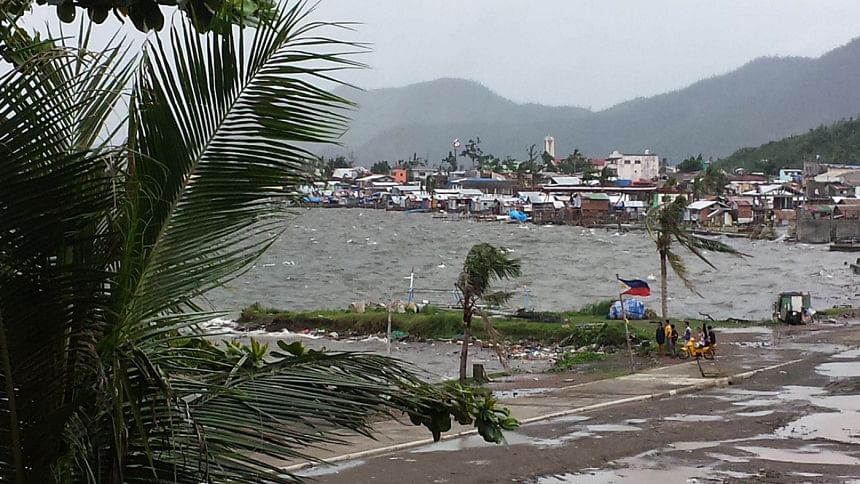
The e-jeepney grabbed the spotlight during the state visit of US President Barack Obama in Manila in April, who personally checked on the CO2-free vehicles and appeared impressed with its potential in curbing the carbon footprint of mass transport in the Philippines.
GET aims to replace some 30,000 Metro Manila jeepneys with 15,000 Comets over the next three years.
The Ayala Foundation, the corporate social responsibility arm of Ayala Group, one of the country's largest conglomerates, has long adopted sustainability as part of both its business and community engagement.
One major undertaking is its support for The Entire Nation (TEN) Moves!, a programme in partnership with theDepartment of Education that seeks to raise funds for the construction of 10,000 classrooms in public schools, including climate-resilient classrooms in vulnerable provinces across the the country. On May 22, meanwhile, the Prudence Foundation, the charitable arm of Hong Kong-based life insurance firm Prudential Corporation Asia (PCA), and Fox International Channels' (FIC) National Geographic launched Safe Steps, an information campaign that aims to bring easy-to-understand information on preparing for calamities to millions around Asia.
With boxing champ and Philippine legislator Manny Pacquiao as ambassador, Safe Steps brings 60-second educational videos providing "knockout advice" on what to do before, during and after natural disasters, including typhoons, earthquakes, floods and fire.
Launched in Manila, the Safe Steps programme has started airing the TV spots across 13 FIC international channels, including the Nat Geo, FOX and Star channel lineups, potentially reaching 24 million viewers. The videos also carry subtitles in eight languages: Bahasa Indonesia, Bahasa Malaysia, Cantonese, Khmer, Mandarin, Tagalog, Thai and Vietnamese.
It is in a similar spirit that the government hopes Filipinos would take on resiliency and readiness in a world of wilder weather - a way not just to survive, but a way of life.
Lessons learned
As for Padernos, it's back in the radio booth. Having survived the monster storm with his family intact, the broadcast veteran is on air every day, this time anchoring a commercial-free public service FM station that serves as his community's link to the government.
His community has learned a lesson all right: when another storm threatened Leyte province barely two months since Yolanda, it did not take much effort to prompt residents to evacuate hazard zones.
While driven by trauma, the people were already aware, he said.
"Before Yolanda, even us in the radio helped in encouraging people to move away from the coast. They [government] had a hard time. People would even shout at them. You really had to force them to evacuate," said Padernos.
"After they saw what happened in Yolanda, you do not have to tell people to evacuate. They take the initiative to seek higher ground," he said. Legarda, meanwhile, hopes that the day will come when Filipinos would no longer have to be scared into action.
"Let's not wait for us to experience another Ondoy or another Yolanda before we start preparing. The images that you see on TV, the Internet or on print, don't let it happen to you. It's the least we can do as human beings and as Filipinos to say that you have contributed to building a resilient nation. And resilience is everybody's business," said the senator.
Copyright: Philippine Daily Inquirer/Asia News Network

 For all latest news, follow The Daily Star's Google News channel.
For all latest news, follow The Daily Star's Google News channel. 



Comments